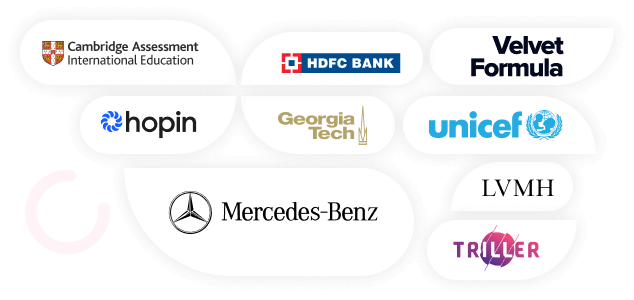Thinking about 2020, what is the first thing that comes to your mind? The answer is obvious – the all-pervasive Covid-19 pandemic. Everything changed, be it schools, colleges, universities and jobs. The whole world witnessed a historic shift this past year.
It’s not new that some companies want to provide the chance to figure out work from home as a perk. However, it’s currently become the norm for many businesses. Whereas 2020 could also be thought of as the year of remote work and outsourcing methods, we tend to see the trend continue in 2021.
Working remotely doesn’t perpetually imply ‘from home’, either; it will apply whenever an employee is off-site, whether that’s at a teahouse, a flexible space, or from another country. Remote work, a niche decision made by some companies, has turned out to be a regular form in which people now work around the world.
The world of remote work is growing at a faster rate than ever before. In early 2020, companies quickly and unexpectedly shifted to remote work but planning for a post-pandemic future involves a more strategic approach to it.
What will happen in 2021?
Many of the things that we did under compulsion in 2020 will now become an indispensable part of us. Working from home won’t be mandatory, neither will going to the office. Amidst all these, one thing is crystal clear that the post-pandemic workforce will be relatively more remote than what it was in the pre-pandemic times.
Outsourcing is foretold to be the popular client strategy within the post-pandemic world. Unsure of the lengthier term, companies can prefer versatile business relationships and maestro outsourced staff, instead of disbursement time and energy on structure in-house groups.
Nearly all organizations will experience an increase in remote work in 2021. With the relaxed pandemic restrictions, company leaders need to plan and decide on how to achieve an optimal remote work strategy. Unlike the abrupt shift that began in early 2020, the coming shift requires an intentional and proactive approach. This involves revisiting a number of company policies and management practices.
The move to a hybrid workplace
Whether you lead a company or a small team, it’s high time to start planning. Simply shifting operations “back to normal” will not do. Leaders must think strategically about how to leverage remote-work experiences to plan for a remote/hybrid workforce in the future. The recent swap from the corporate office to the home office has forced the business leaders to re-examine the business model and strategic priorities.
When pandemic took over the whole world, schedules were abandoned, organizational workflows were disrupted. There was neither any plan nor any standard operating procedure. We looked for expert advice and learned via trial and error. Companies now are trying to determine if the remote policies they suddenly jumped into are viable for future unanticipated challenges.
Several trends already prevalent in the workplace such as the growth of the dispersed workforce and the proliferation of digital engagement, are amplified due to the pandemic. Change, in general, is hard to tackle but with deliberate planning everything falls into place. The post-pandemic recovery will definitely witness a huge change when it comes to work. Remote work will simply be known as “work”.
Considering lessons learned, managers must update the existing policies and practices so as to normalize workflows for a new phase of business. Here, we have some of the emerging trends.
Company Policies:
Are you able to contemplate your tasks from anywhere with WFH policy?
This would modify staff to remain at any place they need as long as they’re prepared to profitably perform their work for the corporation. Strategic concerns for WFA embody the potential for an associate magnified talent pool, likewise as the competitive accomplishment of extremely sought-after staff. Company leadership must decide however best to require the advantage of asynchronous add a WFA setting whereas managing challenges associated with programming and task coordination.
How efficient are you enough to maintain a robust company culture?
Company culture may have to be strengthened or refined as work has been evolved to a lot of remote, hybrid models. Spreading data of the norms, values, and assumptions necessary to the organization becomes harder with a distributed workforce. Recommendations for sustaining culture in a virtual setting embody city halls and special lunches to create shared experiences, check surveys to visualize whether or not shared values are viewed by staff, and intentional communications concerning programs and initiatives necessary to the organization.
What sorts of increased training can be offered?
Companies are progressively realizing that grounding within the social and relative aspects of remote work represents a minimum of as necessary as training in technology and company policies. According to a recent survey, sixty-fourth of executives decide to invest in training leaders for managing a lot of virtual workforces. The analysis found that, before the pandemic, solely half-hour of firms trained staff in virtual work skills, to which training was irresistibly targeted on package technology and company policies.
Management Practices:
In addition to company policy, organizations should contemplate adopting management practices and behaviors in a foreign or hybrid work setting. There are so many queries that managers ought to believe as a part of the transition to a longer-term remote workforce.
Are you capable enough to foster a salubrious remote-work climate?
One of the foremost necessary aspects of managing a foreign or hybrid workforce is establishing an encouraging and positive structure climate for remote employees at the end of the day.
Are you skilled to facilitate staff to manage competitive work and life priorities?
In a remote or hybrid work setting, leaders have the chance to assist staff enact models to effectively manage work and life. Generally, this involves demonstrating that the goal might be an ideal balance, however, a lot of a work-life rhythm works best for them. Employees observe their managers for cues on the way to attempt this.
Are you competent to consciously interact with employees?
Research indicates that even limited amounts of high-quality social interactions, like those demonstrating compassion or concern, will lower stress and improve well-being. Perennial occurrences of those interactions throughout the day will give a way of happiness, mitigating the emotions of isolation usually related to remote work.
According to a study of remote colleagues, an inevitable communication measure fosters productive and trusting operating relationships. Managers will build a sequence among staff by victimization conferences as opportunities for workers to attach socially and promote personalized relationships through sharing songs, photos, or fun facts.
In addition, leaders will establish practices for team collaboration. Building a shared mentality for spread and digital groups promotes a standard identity and customary understanding. This could be developed by setting team goals, providing a shared data context, and informative the aim of the team, almost like team development in ancient workplace settings. Events like virtual low chats and remote workplace hours, to proactively connect in-office and remote employees should be maintained in this manner.
Are you apt to nurture worker trust and accountability?
After the Covid-19 crisis has passed, managers may have to search out ways in which to re-establish trust among remote groups on a longer-term basis. It is hard to understand worker actions and motivations in remote work. This leads to difficulty in establishing competency and social trust.
As we tend to come to pre-pandemic workplaces, strategic choices concerning whether or not to develop a foreign and hybrid work come back to the forefront. While remodeling their remote workforce, organizations will proactively contemplate company policies and management practices with intentional designing. Now is the time to replicate what proportion you and your staff have learned over the past year and use your new data and skill to make your own best geographical point of the force.
Business blessings of remote operating groups
Increased Productivity
The ability for employers to trust their groups once they compute the workplace can remain the key to realize additional productivity than ever before. Knowledge shows that once staff will skip the occasional breaks and an extended commute, productivity reigns supreme.
There was created a biennial remote work productivity study, on another hand the researchers followed five hundred staff when dividing them into ‘remote’ and ‘traditional’ operating teams. The remote work rate results not solely showed peace productivity but also saw adequate boost in a full day’s work however conjointly fewer sick days and a fifty percent decrease in worker attrition.
Cost-Saving
With fewer individuals within the workplace, corporations will constrict their property footprint, granting additional economical space to observe. That very same Stanford study of remote staff allowed the collaborating company to save lots of nearly US $2,000 per worker on its workplace area rent, just by victimizing the area additional expeditiously.
Competitively
Regardless of the merchandise, mission, or goals, it’s the team that drives business towards the growth of success. The power to draw and retain prime talent could be a key somebody in today’s competitive business world.
During this arena, remote work will play a decisive role in giving personal recognition to the leader and worker. Corporations that supply a versatile agreement, like full, half, or partial remote work, might build the distinction for a candidate choosing their next career move.
Remote work is here to endure
The remote period has ultimately returned. The technological capability has existed for several years for desk-based jobs to be performed from anyplace, nevertheless corporations were typically hesitant concerning permitting staff out of their sight. COVID-19 overcame that barrier for several businesses.
And the expertise has the well-tried positive for staff and employers alike.
Many professionals report being productive receptionists, thus post-pandemic remote work plans provide the potential to lift productivity by the maximum amount of 24 percent.
The normalization of remote work offers the prospect of more modest prices and exaggerated productivity. Those are engaging sights at any time, and even additional thus as individuals struggle to live through pandemic-and lockdown-caused economic issues.
However, reduced industrial land commitments, improved potency, and happier staff to work from wherever they want are expected to have their way of enormous impact which can vary the character of the many cities.





